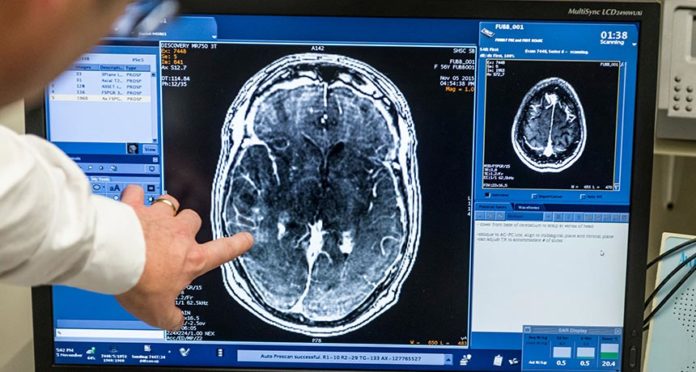
For the first time, doctors have broken through the blood-brain barrier in order to treat a brain disease non-invasively, marking an exciting new frontier in medicine. Dr. Todd Mainprize, a neurosurgeon in the Hurvitz Brain Sciences Program at the Sunnybrook Health Sciences Centre in Toronto, along with a team of other neuroscientists, pioneered the revolutionary new method.
The blood-brain barrier is a natural defense mechanism that prevents pathogens and some chemicals already present in the bloodstream from reaching the brain. In its job protecting the brain from would-be invaders, the blood-brain barrier also presents a particular difficulty for treatment of many brain diseases, as many drugs administered into a patient’s blood are incapable of reaching the patient’s brain. About 95 percent of drugs administered through typical means (pills, infusions/injections, enemas, patches) don’t have any function in the brain. This is especially consequential when the target of treatment is a life-threatening tumor.
Gliomas are a type of brain tumor that are difficult to treat surgically due to their tendency to invade the brain from a central tumor source, branching out and spreading cancer throughout the brain. While portions of gliomas can be removed, it’s nearly impossible to remove one in its entirety. Doctors seeking to treat the remaining part of the tumor with chemotherapy are under extremely strict limitations, as the majority of chemotherapy drugs cannot cross the blood-brain barrier.
Testing out a new technique to avert this natural barrier, Dr. Mainprize’s team relied on a phenomenon called “sonication,” wherein sound frequencies too high for humans to hear (or “ultrasounds“) are used to agitate and fragment cells. Usually sonication is performed on samples of cells in the lab, as it allows scientists to penetrate the cell membrane and gain access to the materials inside, which include DNA, proteins, and subcellular fragments.
The secret behind sonication is how ultrasounds interact with air bubbles. When in the presence of ultrasounds, air bubbles rapidly compress and expand, vibrating in a way that loosens junctions between cells.
In this new procedure, a chemotherapy drug is introduced to a patient’s blood without any apparent means to reach a brain tumor. Then, microscopic bubbles smaller than red blood cells that can pass seamlessly through the circulatory system are produced in a patient’s bloodstream. Finally, pulses of ultrasound targeted on blood vessels in the brain interact with the microscopic bubbles to cause small openings in the blood-brain barrier. This allows the chemotherapy drugs to reach the tumor through the barrier’s targeted openings. Although the technique has worked in animal studies, this is the first successful human application.
“The blood-brain barrier has been a persistent obstacle to delivering valuable therapies to treat disease such as tumors,” Dr. Mainprize said in a press release. “We are encouraged that we were able to temporarily open this barrier in a patient to deliver chemotherapy directly to the brain tumor. This technique will open up new opportunities to deliver potentially much more effective treatments to the targeted areas.”
To make sure the drugs had reached the tumor, less than 24 hours after the procedure doctors removed portions of the tumor and surrounding tissues to test the differences in chemo concentration between regions that did and did not receive treatment. These invasive steps are necessary while the while the procedure is tested for feasibility, safety, and preliminary efficacy, but if the technique makes it out of clinical trials, they will no longer be necessary. Still, because of the invasive nature of demonstrating the procedure works, the trials are limited to participants already scheduled for traditional neurosurgery.
The preliminary success of this research opens the door for treatment of other brain diseases that are normally hindered by the protection of the blood-brain barrier, including brain tumors, Alzheimer’s disease, and many psychiatric conditions.
